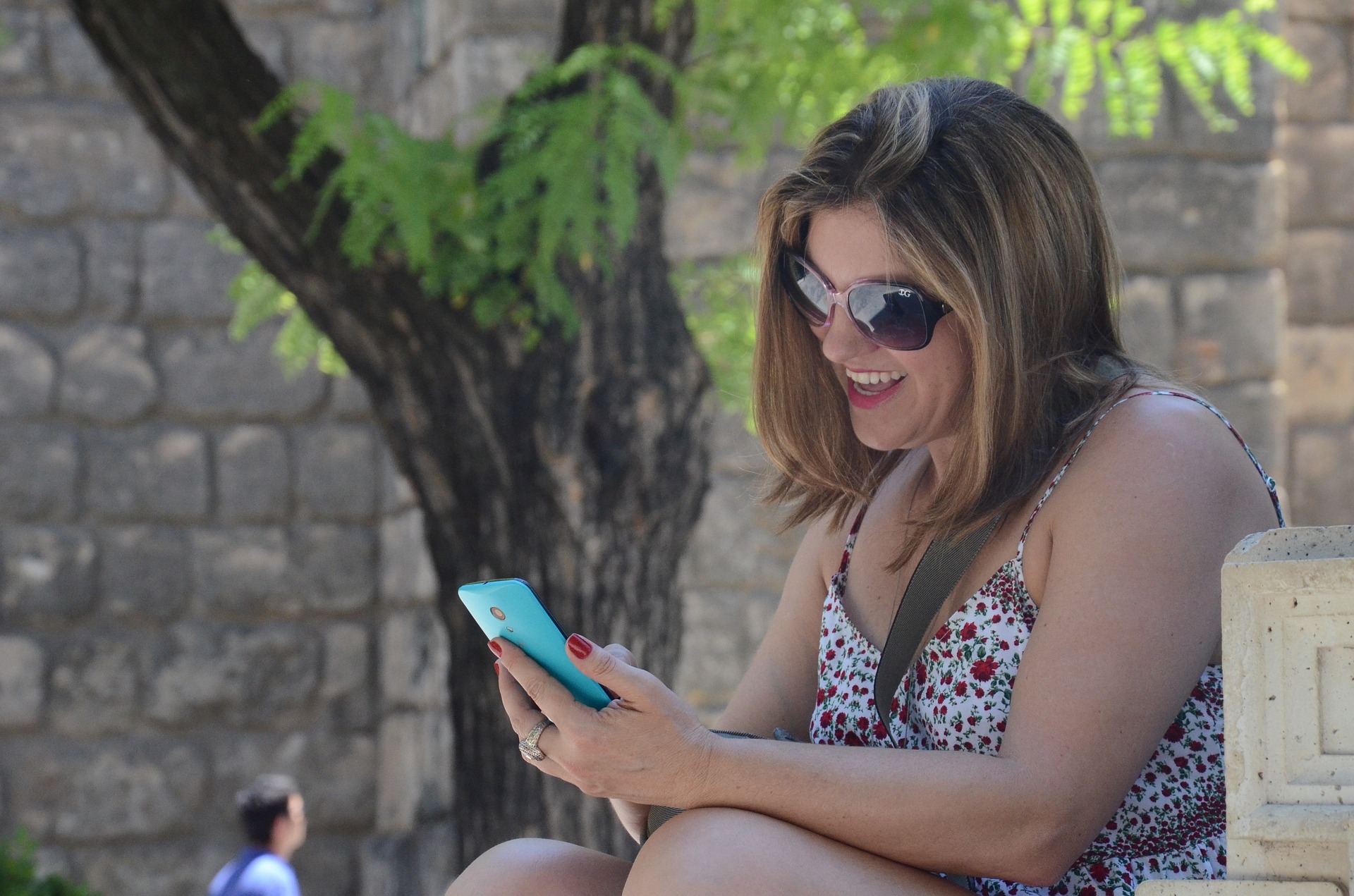The Best Market Share Growth Strategies for Consumer Packaged Goods Companies
By 2025, the money spent producing goods for the CPG industry will reach nearly $14 trillion, according to a McKinsey study. That represents a 100% growth rate over a period of a single decade. But while the CPG sector may be ready to double its production of goods, the population isn’t growing at the same rate. That equates to an increased number of brands all competing for the attention of a stagnant number of consumers. It’s safe to draw some conclusions here, namely that the CPG industry is going to see many brands fade out in the years to come. If you don’t want your brand to lose traction within this highly saturated market, you must commit to a strong growth strategy.
Growth marketing isn’t about creating an iconic commercial or logo; it’s an ongoing effort to gain an audience and spread your brand’s message. Success for CPG brands requires the ability to create an accessible, transparent image that consumers want to connect with. It requires developing a relationship with consumers so those engaged customers begin to help drive your sales. Gaining market share is all about building personal relationships on a mass scale. We’ve already seen some excellent examples of this from brands across industries. By following their examples of the best market share growth strategies, your brand can continue to grow even as the CPG industry becomes increasingly more competitive.
Personalizing Mass Marketing as a Market Share Growth Strategy
Personalization is now a huge driving point for successful marketing campaigns. While it might seem impossible for a CPG company to run a cost-effective personalized campaign when they’re trying to advertise to a mass audience, it’s become crucial to consumers that brands be willing to make a connection with them. In fact, nearly half of consumers buy more from companies that provide a personalized experience across marketing channels.
Consider the Share a Coke campaign. In early 2011, Coke began marking bottles with popular local names in Australia. By the end of their campaign, they had sold 250 million named bottles and cans—despite the fact that the population of the country is only 23 million. This equates to an average of ten beverages for every person in the country. aa
Their success was attributed to one simple idea: feature the top 150 Australian names on labels. Coke created a unique, personal connection for every person who bought a bottle. The best part was that they didn’t need to use any expensive data collection or studies, they simply used common information to create the illusion of familiarity.
The takeaways for your brand:
Small can be meaningful:
Consumers are drawn to products they believe connect to them, even in small ways. This can be something as simple as shifting the focus of your packaging to what most consumers are seeking out, like healthier options, seasonal items, or timely back-to-school promotions. By referencing common life events, you can create a personalized experience on a mass scale.
Personal doesn’t have to be costly:
Remember, building a connection isn’t a matter of changing a product but instead of changing how the product is represented. There’s no need to spend a lot of money redeveloping a product when you can simply use what you’re already selling to deliver an experience.
Personalization can be societal:
While data collection is valuable for personalization, it’s not entirely necessary as there are ways to engage consumers without knowing them on an individual level. Keep in mind what brings your target audience together on an emotional level, whether it’s their families, their desire for healthy foods, or a national holiday.
Big advertising to a mass market may no longer be the most viable option for most smaller brands seeking brand awareness to increase market share. Larger brands, as well, may need to complement their above the line ad campaigns. In general, brands need to shift their thinking from making a large impact with a single, oversized campaign to making a hundred smaller, more personalized impacts with repeated interaction on social media platforms such as Facebook, Instagram, and mobile apps. With the technological resources available today, this can be done inexpensively and has the potential to reach a far more targeted audience.
Advertising in the modern media age should center around capitalizing on shorter attention spans and the consumer’s desire for more meaningful interaction. This approach works for brand awareness campaigns because it offers:
- Highly target audiences: Expanding the focus from mass media to social media allows you to better target campaigns based on demographic and prior purchase behaviors.
- Increased ROI: Using less costly tactics – that are still highly effective – increases ROI
- Shareable content: Social media allows consumers to share your marketing material, organically increasing brand awareness with no additional investment required.
Gaining Attention for Good Causes to Incentivize Consumers
84% of consumers believe that big brands have the opportunity to change the world, so it should come as no surprise that they are demanding more social responsibility from the companies that they give their money to. Consumers are willing to spend more on brands they believe are good for them, their families, and their communities, but are especially open to engaging with brands that are socially conscious.
Consider Kellogg, an extremely well-known company that capitalized on its brand name to help people in need. The company rolled out a new initiative to provide breakfast foods to underprivileged people. The program is far-reaching, from providing free breakfasts for school children to donating food to nations in need, with the goal of impacting 3 billion people by 2025.
Thanks to these efforts, Kellogg has gone from a faceless brand to a brand that cares. While the company has always had a very positive attitude towards charitable giving, it was only once they highlighted their own charitable nature that they gained significant recognition for it. That recognition, in turn, became a greater market share. The company has maintained a positive image in the eyes of its consumers even as modern consumers have begun to turn from the big brands to smaller, more personalized options.
The takeaways for your brand:
Use charitable giving to tell a story:
Rather than simply telling consumers what you give, tell them why you give. This validates your brand’s reasons for being charitably-focused so that consumers don’t assume it’s simply about PR.
Include consumers:
Invite consumers into the process by encouraging them to give as well. For instance, box top campaigns, where consumers turn in box tops to earn rewards for schools, are a great way to interact with consumers in a meaningful way.
Choose long-tail programs over one-off events:
Ongoing campaigns give credibility brand initiatives and offer a more positive impact than simply a one-time donation or charitable event. Consumers recognize that your brand is in the program for the long haul, increasing their trust in your authenticity.
However, micro moments aren’t entirely dependent on mobile search. In fact, mobile-based apps can offer an even greater opportunity to connect with consumers.
Building Brand Authenticity to Strategically Increase Market Share
Brand transparency is quickly becoming one of the most important aspects of CPG marketing. Approximately 39% of consumers report they’re willing to switch to a new brand if that brand is more authentic than the one they’re currently using. But what does brand authenticity mean? It means being completely transparent in what goes into a product, whether it’s the ingredients or the labor behind it. This transparency can be leveraged even when the cause of the needed transparency is less than ideal.
In 2015, Chipotle Mexican Grill faced a challenge after several of its chains were linked to an E. coli outbreak. Instead of taking a silent approach, the company elected to be honest in its efforts to repair the problem. They were clear about how the issue occurred and, most importantly, what they were doing to fix it. As a result, when the affected stores reopened, sales bounced back to normal almost immediately.
Transparency is increasingly important to customers. They want to feel like companies respect their intelligence and will be honest with them when needed. Chipotle was able to leverage this expectation to ensure it was able to recover even after a potentially brand devastating event.
The takeaways for your brand:
Be transparent—in every circumstance:
When things go wrong, be open about the issue—and how you are going to resolve it.
Don’t try to spin an issue:
Treat customers how you would want to be treated—don’t use “spin” advertising. Instead, present your brand in a full, clear light.
Be direct:
Use clear language to explain your brand rather than burying your message in industry speak.
Implementing Proximity Marketing as a Strategy for Growth
The value of proximity marketing, where consumers receive offers as they’re out and about, can’t be underestimated. Proximity marketing uses a consumer’s location in order to offer them timely marketing, an effective way to strategically gain market share.
Zatarain’s is one of the first CPG brands to use this type of technology in-store. The company used a beacon-based program to notify consumers of rewards points, deals, and other product-related items when they were near the brand’s location in a store. They reported a significant jump in purchases following this marketing campaign because they were able to remind consumers of their brand while they had the motivation and immediate ability to buy. Any brand can accomplish this by leveraging app-based marketing that shares their brand with consumers while they shop—without the high cost of in-store marketing options.
The takeaways for your brand:
Timing is everything:
Reminding consumers of your brand as they’re shopping and motivated to buy can increase conversions over more static marketing strategies
Capitalize on the digital age:
Use digital avenues to drive consumer sales in brick and mortar locations.
Maximizing Conversions and Market Share with Multi-channel Marketing
Multi-channel marketing requires delivering a consistent brand message across multiple platforms, be they in store, on social media, or mobile. This practice is commonly acknowledged to help build brand awareness, which can lead to greater market share. According to a recent study, 43% of marketers report that cross-channel marketing is a top priority.
Pinkberry, however, knew this before it became common knowledge. In 2011, the company used the ephemeral messaging platform Snapchat to drive consumers into their stores. The plan was simple: customers would go to Pinkberry, take a photo of themselves there, and then receive a coupon they could use in store.
The approach tied social, mobile, and brick and mortar marketing together into one big campaign and was a major success, helping Pinkberry earn the 11th spot on the Restaurant Social Media Index, which tracks online mentions and activity surrounding a brand. The frozen yogurt purveyors even beat out several older established brands like Domino’s and Subway.
Getting consumers to follow you across several platforms can go a long way toward increasing your brand’s market share. It’s essentially using the old-fashioned sales funnel in a new way: your brand lets consumers know of a campaign on social media which drives them to download a mobile app. The mobile offer received on the app then pushes them into retail locations.
The takeaways for your brand:
Utilize the power of social media:
Leverage mobile marketing through well-known social media apps to connect with consumers who primarily check social media via mobile. This offers an existing user base you can share your brand’s message with.
Reward engaged consumers:
Encourage consumers to engage with your brand by offering a reward for participation. That may mean they need to follow your brand online, check in at one of your locations, or share a post. Regardless, some level of interaction with your brand is necessary to make these campaigns effective.
Successful Lessons for Developing the Best Market Share Growth Strategy
Many companies have been able to carve out an increased market share by being first in line when it comes to new marketing avenues. Thanks to our rapidly increasing digital space, these avenues become more prevalent every single day. By taking tips from the successful campaigns of the past, companies can gain greater market share. The key is to choose new ways to stand out from the crowd in an increasingly saturated marketplace.
The above campaigns all leveraged digital marketing in some way to drive brick and mortar sales. Your brand can follow these examples to strategically increase market share. Whether your consumers are interacting with your brand on social media or via mobile apps, your message can be honed to reach consumers in the right places and at the right time. Beacon technology and personalized programs create a connection with the consumer that makes them more apt to try out your brand. It’s time to shift your brand’s marketing focus from one-off advertising campaigns to creating a consistent, personal, and ongoing connection with your consumers in order to gain market share and increase overall growth.
Shopkick offers personalized, mobile marketing solutions for our CPG partners interested in growing their brand recognition and awareness. For more information on how you can increase your brand’s market share with the help of our app, reach out to our team today.



 There were coupons that came in the mail, in the Sunday newspaper, and on the back of my receipts. Sometimes, I was able to find the brands or products I was looking for; other times, to be totally honest, sorting through it all was a bit overwhelming. Okay, it was
There were coupons that came in the mail, in the Sunday newspaper, and on the back of my receipts. Sometimes, I was able to find the brands or products I was looking for; other times, to be totally honest, sorting through it all was a bit overwhelming. Okay, it was